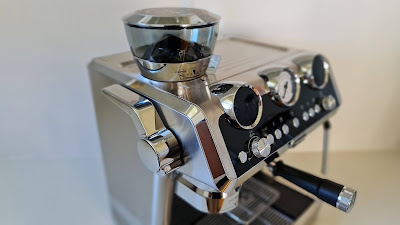Well here we are again, still not quite happy with the WiFi coverage at home.
So many questions...
Why does it work so well in some rooms but not others? Why does everything run so brilliantly for me when I'm the only one around then so badly when everyone else turns up?
Perhaps the biggest question of all; why is all the good gear so expensive?
Vodafone seems to be kicking off 2021 with solid answers to all those issues...
Vodafone is now offering what it calls SuperWiFi in conjunction with its broadband plans. Effectively this means you'll be supplied with the TP-Link Deco X20 whole home mesh WiFi system to use as your default router.
This is a pretty generous offer because that pack currently retails for around $450 and Voadafone are giving it to you for free when you sign up with them.
At the risk of sounding like an ad (which this definitely isn't)... that's not all.
Vodafone also offers expert remote support and even in-home support visits to help you get set up if need be.
I'm pretty confident you won't need any of that support though because this might be the easiest WiFi hardware I've ever configured. It's certainly the least complicated mesh system I've encountered to date. Quick reminder; a mesh system means multiple access points around your home all using a single WiFi network name so you stay connected wherever you are.
In this case, Vodafone's Deco X20 pack contains two units although they'll send out more free-of-charge if that's what it takes to provide "Wall-To-Wall" coverage in your home. If that is what it takes, you must have quite a house, as the two Deco units provided are supposed to cover up to 370 square metres and they certainly blanket my large, two-storey, four-bedroom home with fast, powerful access in every nook and cranny.
But back to that setup process, if you can call it a process. All it really involves is downloading the TP-Link Deco app and following a few simple steps to name your WiFi network and set its password. Setting up the second unit it even easier; you turn it on. That's all. No pairing required. Switch it on and it automatically teams up with the initial unit to create your mesh masterpiece effortlessly.
Not only have you now improved your home's WiFi coverage dramatically but you've also future-proofed it as the Deco X20 system runs on the latest WiFi-6 standard, which means more devices can communicate with the router more efficiently, being prioritised according to the greatest need. This is one of only a few WiFi-6 mesh systems currently available and the only one being provided by a major New Zealand ISP.
A word of warning though; and this is something I didn't realise until I did it myself. If you do decide to upgrade to WiFi-6, you need to understand this is an entirely new network you're setting up. Even if you use the same network name and password as you had assigned to your old router, you can't fool your devices and you'll have to reconnect everything to the new system; from phones, tablets and TV's to smart speakers, lights and security cameras.
For some people this isn't a major but given I currently have thirty devices connected to my network (and not everyone's home right now) it took me a while to get everything up and running again.
But when I did, oh boy. I'm absolutely loving the power, coverage and above all, the stability WiFi-6 has brought to the household - even though many of the devices aren't WiFi-6 enabled themselves, I've definitely noticed a jump in performance and reliability across my entire home network.
Which is exactly what Vodafone is guaranteeing. They're so confident this system will provide you with the wall-to-wall solution you've been looking for, they're offering a $100 credit to your account if it doesn't work.
I seriously doubt they'll have to make too many payouts though, going by my experience.
The units themselves are attractive enough and certainly compact; about the size and shape of a large tin of peaches. The power plug is inconveniently large though and may not fit easily behind some items of furniture. There's an extra ethernet port on each Deco unit so you can hardwire a device into it if you like - multiple ports would be my preference but hardwiring isn't really the point of a mesh system like this after all.
Using the TP-Link Deco app you can also make other little tweaks like naming connected devices, creating profiles for various users - even scheduling the status LED to turn off at night or all the time. There are other features like parental control for different users and manual device prioritisation; all fairly standard these days on most decent routers.
But there's nothing standard about the fact you're basically getting this tech for free if you sign up with Vodafone. If you're looking to upgrade to a mesh network, especially a WiFi-6 one, this is your New Year's no-brainer.
Click here for more information and pricing on Vodafone SuperWiFi.

















